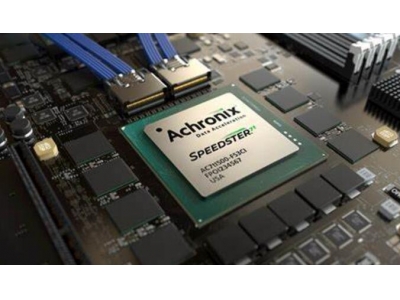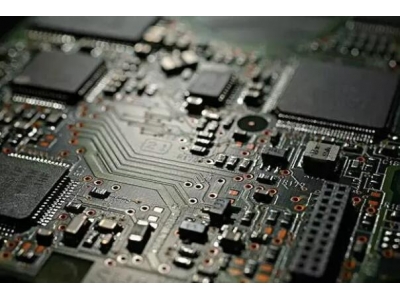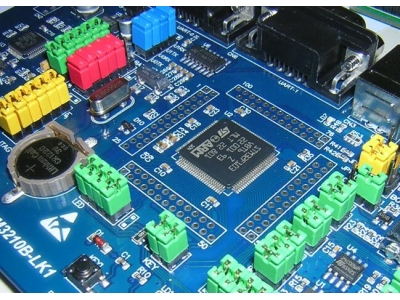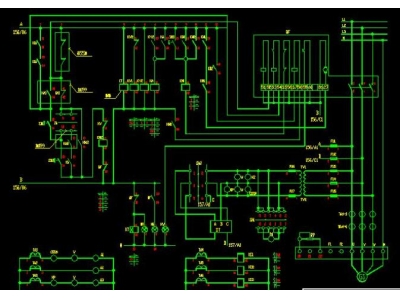pcm测试是什么?
一、pcm测试是什么?
PCM即 Process Control Monitor (工艺控制监控)的缩写。从名称上我们可以看出PCM测试的基本作用即通过电参数对工艺控制起到监控作用,同时它也是反映产品质量的一种手段。PCM 作为一个技术支持部门,主要把线上一些工艺异常进行及时的反映出来,在产品入库前对其进行最后一道质量的检验,其作用归纳起来,有如下几点:
对产品进行参数质量检验;
通过PCM测试,获取线上异常信息;
为线上的工艺实验提取参数信息;
进行客户反馈产品失效原因分析;
数据统计分析工作;
二、集成电路测试是怎么测试的?
1. 集成电路测试主要是使用专业的测试设备进行的,利用其提供的测试信号以及测试程序,对集成电路的特性进行测试。2. 其中包括电学特性测试、功能测试和可靠性测试等。电学特性测试主要是用来测试集成电路的各种电学参数,如电流、电压、功率等;功能测试主要是测试集成电路的功能是否符合设计要求;可靠性测试主要是测试集成电路的寿命和工作环境等因素。3. 在具体的测试中需要注意测试参数的精度和测试方法的准确性,这有助于保证测试结果的正确性和可靠性。同时,在测试结束后还需要进行数据分析和测试报告的撰写,这些都需要花费一定的时间和精力。
三、集成电路测试 现状
集成电路测试的现状
随着科技的不断进步和智能设备的普及,集成电路测试在当前的信息技术行业中变得愈发重要。集成电路是现代电子设备中不可或缺的组成部分,因此测试其质量、性能和可靠性是必不可少的环节。集成电路测试作为保障产品质量和稳定性的重要手段,在当今的电子行业扮演着至关重要的角色。
从全球范围来看,集成电路测试的技术和方法已经取得了长足的进步。各种先进的测试设备和技术不断涌现,为集成电路测试提供了更多可能性和便利条件。在中国,作为全球最大的电子制造国之一,集成电路测试技术的发展也日益受到重视,国内企业在不断提升自主研发能力的同时,也借鉴和吸收国际先进经验,推动了本土集成电路测试技术的快速发展。
目前,集成电路测试行业面临着一些挑战和问题。首先,随着集成电路封装和尺寸的不断缩小,测试难度和复杂度也相应增加,传统的测试手段已经无法满足现代集成电路测试的需求。其次,产品的多样化和定制化也给测试工作带来了更大的挑战,如何快速、高效地进行测试成为了亟待解决的难题。此外,测试成本的控制和设备的更新换代也是目前集成电路测试领域急需解决的问题。
面对这些挑战和问题,集成电路测试行业需要不断创新和进步。通过引入人工智能技术和大数据分析手段,可以提升测试的效率和准确性,降低测试成本,使测试过程更加智能化和自动化。同时,加强与行业内外的合作与交流,共同探索集成电路测试的新模式和新方法,推动整个行业向着更加智能、高效的方向发展。
总的来说,集成电路测试行业正处于快速发展的阶段,虽然面临诸多挑战和问题,但也充满着机遇和潜力。只有不断创新、持续改进,才能适应新时代的需求,保持行业的竞争力和领先地位。相信随着技术的不断突破和人才的培养,集成电路测试行业必将迎来更加美好的未来。
四、集成电路芯片测试技术方法?
一、静电放电(ESD)测试:通过模拟实际使用环境下的静电放电情况,测试集成电路对静电放电的耐受能力。
二、可靠性测试:包括高温、低温、温循、湿热等测试,以检测电路在极端环境下的可靠性。
三、X射线测试:利用X射线对芯片内部结构进行扫描,以检测芯片内部连接、封装、铜线等结构是否存在缺陷。
四、光学检测:使用显微镜等光学设备对芯片外部结构进行检测,以发现芯片尺寸、层次、技术等方面的问题。
五、电性能测试:包括交流扫描测试、直流参数测试等,以检测电路在正常工作时的性能指标。
六、信号完整性测试:以点对点测试的方式,检测信号在传输过程中的幅度、延时、耗散等因素,以保障信号的可靠传输。
以上是常用的集成电路检测方法,不同检测方法的目的和应用场景不同,可以根据具体情况选择合适的方法进行测试和验证。
五、pcm测试仪有什么用?
PCM综合测试仪是适用于PCM一次群传输系统的智能误码测试仪,用于PCM端机和以光纤、微波、卫星、同轴电缆、对称电缆等为传输方式的通信系统的测试。
六、集成电路开发与测试证书含金量?
含金量非常高
,集成电路工程师电子设计初级工程师认证的宗旨是着力提高被认证者对所学专业知识的综合运用能力,着力提高被认证学员的实际动手能力,以能满足企业及市场对电子工程设计人员的要求为最终目的;电子设计中级、高级认证的宗旨是着力考查被认证者的电子技术综合运用能力(含独立进行产品开发的能力、自我学习能力及分析问题解决问题能力)
七、集成电路测试员是干嘛的?
是指从事集成电路晶圆测试、成品测试、可靠性试验和失效分析等工作的人员。
具体的工作如下:
① 运用自动测试探针台等设备完成晶圆测试操作;
② 操作自动测试、自动分选设备进行成品测试操作;
③ 进行可靠性试验;
④ 编写测试报告,分析测试结果;
⑤ 与芯片设计、芯片制造、芯片封装等部门进行技术沟通。
八、集成电路IC的好坏如何测试?
1、首先要掌握该电路中IC的用途、内部结构原理、主要电特性等,必要时还要分析内部电原理图。除了这些,如果再有各引脚对地直流电压、波形、对地正反向直流电阻值,那么,对检查前判断提供了更有利条件;
2、然后按故障现象判断其部位,再按部位查找故障元件。有时需要多种判断方法去证明该器件是否确属损坏。
3、一般对电路中IC的检查判断方法有两种:一是不在线判断,即电路中IC未焊入印刷电路板的判断。这种方法在没有专用仪器设备的情况下,要确定该电路中IC的质量好坏是很困难的,一般情况下可用直流电阻法测量各引脚对应于接地脚间的正反向电阻值,并和完好集成电路进行比较,也可以采用替换法把可疑的集成电路插到正常设备同型号集成电路的位置上来确定其好坏。当然有条件可利用集成电路测试仪对主要参数进行定量检验,这样使用就更有保证。
九、集成电路封装测试是啥意思?
封装是集成电路制造的后道工艺,集成电路封装是把通过测试的晶圆进一步加工得到独立芯片的过程,目的是为芯片的触点加上可与外界电路连接的功能,如加上引脚,使之可以与外部电路如PCB板连接。
同时,封装能够为芯片加上一个“保护壳”,防止芯片受到物理或化学损坏。在封装环节结束后的测试环节会针对芯片进行电气功能的确认。在集成电路的生产过程中封装与测试多处在同一个环节,即封装测试过程。
十、The Meaning of PCM in Finance: Explained
In the world of finance, PCM is a frequently used acronym that stands for Profit Center Management. This term refers to a practice used by companies to evaluate and manage the profitability of individual business units or departments within the organization.
Profit Center Management involves the allocation and tracking of expenses, revenues, and profits for each profit center. A profit center is a distinct division or unit within a company that is responsible for generating its own revenues and incurring its own expenses. By analyzing the financial performance of each profit center, companies can make informed decisions about resource allocation, pricing strategies, and overall business profitability.
How Profit Center Management Works
Profit Center Management is a crucial tool for companies to assess the financial performance of different aspects of their business. It provides valuable insights into the profitability and cost-effectiveness of each profit center, which in turn helps management make data-driven decisions.
The process of Profit Center Management involves:
- Allocating Costs: The first step is to allocate all relevant costs to each profit center. This includes direct costs that can be specifically identified with a particular profit center, as well as indirect costs that need to be allocated based on a predetermined methodology.
- Tracking Revenues: The next step is to track the revenues generated by each profit center. This includes sales revenue, fees, royalties, and other income sources that are directly associated with the activities of a specific profit center.
- Analyzing Profitability: Once costs and revenues have been allocated and tracked, Profit Center Management involves analyzing the profitability of each profit center. This includes calculating key performance indicators such as gross margin, net profit margin, return on investment, and others to assess the financial health and efficiency of each profit center.
- Making Informed Decisions: Based on the insights gained from analyzing profit center profitability, management can make informed decisions regarding resource allocation, product pricing, cost-cutting measures, and overall business strategy.
The Benefits of Profit Center Management
Implementing Profit Center Management can bring several benefits to a company:
- Improved Performance: By evaluating the financial performance of each profit center, companies can identify areas of strength and weakness, allowing them to take corrective actions and improve overall business performance.
- Informed Resource Allocation: Profit Center Management helps companies allocate resources more effectively. By understanding the profitability of each profit center, management can direct resources to areas that generate higher returns and withdraw resources from underperforming areas.
- Enhanced Decision-Making: Profit Center Management provides accurate and meaningful financial data that supports informed decision-making. This leads to better strategic choices, increased profitability, and improved competitive advantage.
- Accountability and Transparency: By holding each profit center accountable for its own financial results, Profit Center Management promotes transparency within the organization. It allows for clear identification of each profit center's contributions and facilitates performance evaluation.
In conclusion, PCM in the context of finance stands for Profit Center Management. This practice enables companies to assess the financial performance and profitability of individual business units or departments within the organization. By implementing Profit Center Management, companies can optimize resource allocation, improve decision-making, and ultimately enhance their overall financial performance.
Thank you for reading this article on the meaning of PCM in finance. We hope it has provided you with valuable insights into this important practice in the world of finance.





